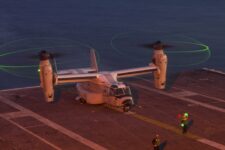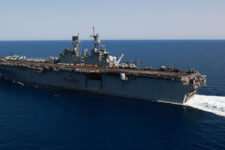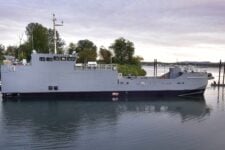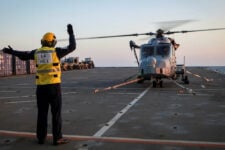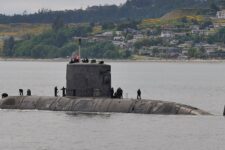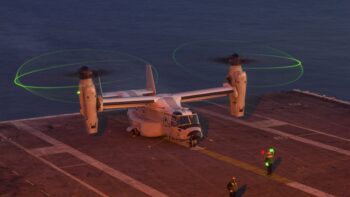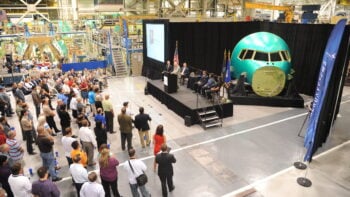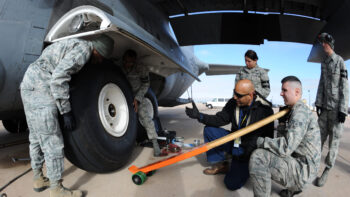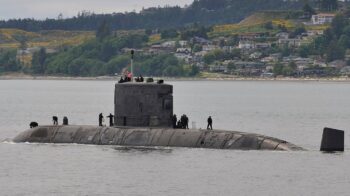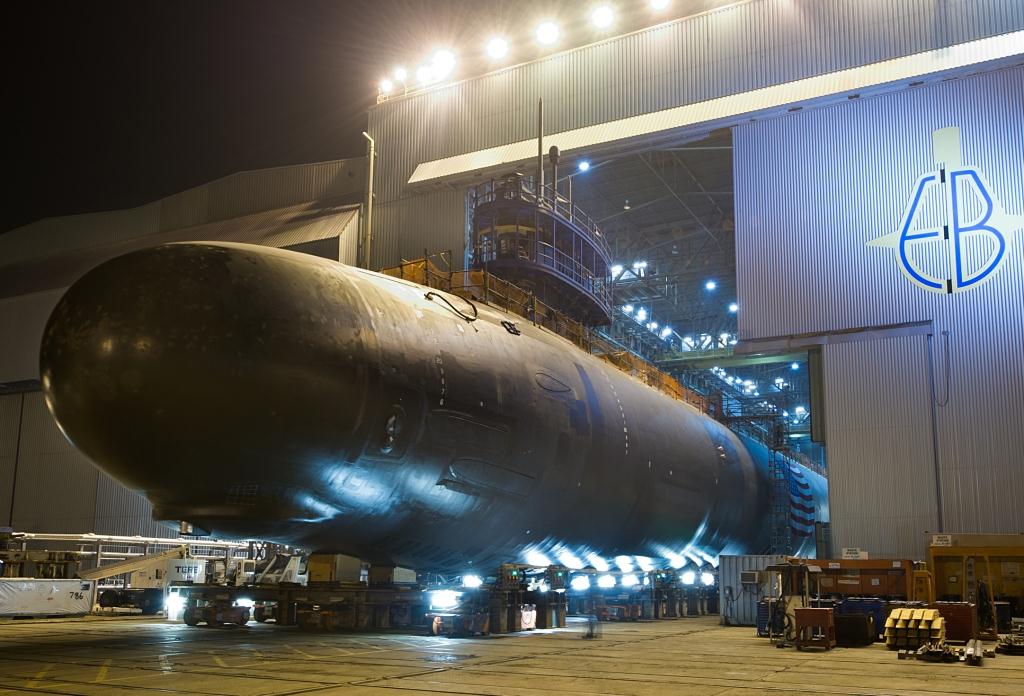
The attack submarine North Dakota.
Problems with a new kind of missile launcher will delay the commissioning of the attack submarine North Dakota, the Navy announced this afternoon. That’s a significant stumble for the Virginia-class submarine program, whose steadily decreasing costs and construction time per boat have become a point of pride for the Navy and shipbuilder Electric Boat alike. But sometimes that’s the price of new technology.
While the Navy’s 3pm press release spoke of unspecified problems with the “redesigned bow,” a Naval Sea Systems (NAVSEA) spokesperson told me the primary issue was the new “Virginia Payload Tubes,” or VPTs. These are a new way to carry Tomahawk cruise missiles, whose ability to strike targets hundreds of miles inland (with non-nuclear precision warheads) is what makes modern attack submarines so much more strategically potent than their torpedo-only predecessors or even, by some measures, aircraft carriers.
Earlier “Block I” and “Block II” Virginia submarines have 12 conventional Vertical Launch System (VLS) tubes in the bow, each VLS holding one Tomahawk. But the Block III submarines, of which North Dakota is the first and farthest along, will have two much bigger tubes, each capable of carrying six Tomahawks — or a smaller number of some larger future missile, or even potentially an unmanned mini-submarine. The larger tubes allow not only more flexibility for future weapons but lower costs in the near-term to build and maintain, the Navy claims.
A quick, nitpicky, but critical clarification: The Virginia Payload Tubes (VPTs) that Block IIIs carry in their bow are not the same thing as the much larger Virginia Payload Module (VPM). The module will be added to a new, longer-hulled Virginia variant called the Block V, which won’t be bought until 2019 and will enter service even later.
By contrast, all eight Block III Virginias have already been paid for and are in various stages of construction — which at least allows “all lessons learned” from Dakota’s VPT troubles to be applied to its as-yet uncompleted sisters. As for Dakota herself, originally scheduled to be commissioned at the end of May, the Navy will set a new date after dealing with “additional design and certification work” on the bow and unspecified “material issues with vendor-assembled and delivered components.” Here’s hoping for a quick, inexpensive fix and a short delay for this high-priority program.
V-22 Osprey operating with ‘limited envelope,’ required to stay near airfields
Despite all three US V-22 variants flying, they remain under safety restrictions, according to service acquisition officials.
